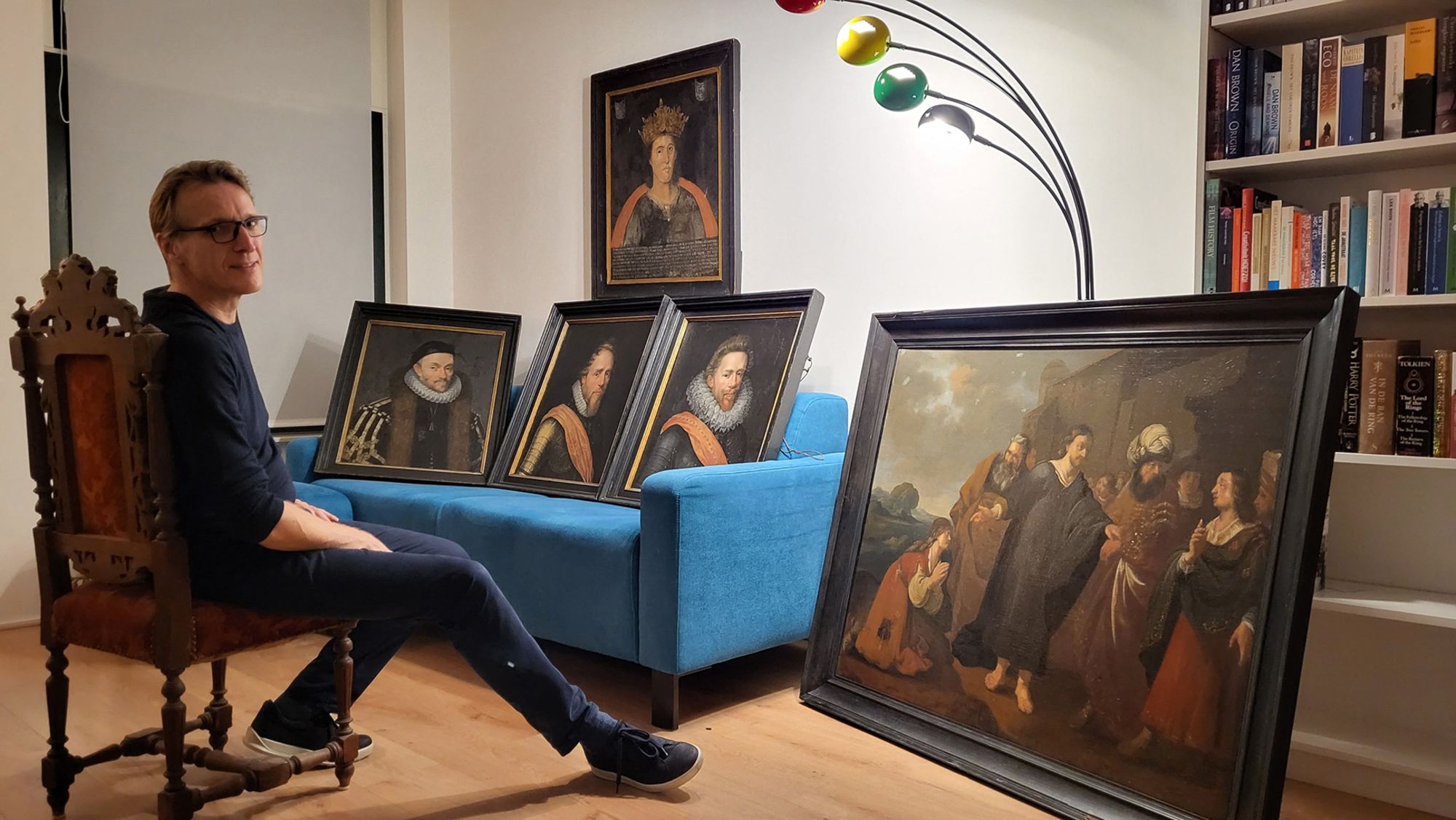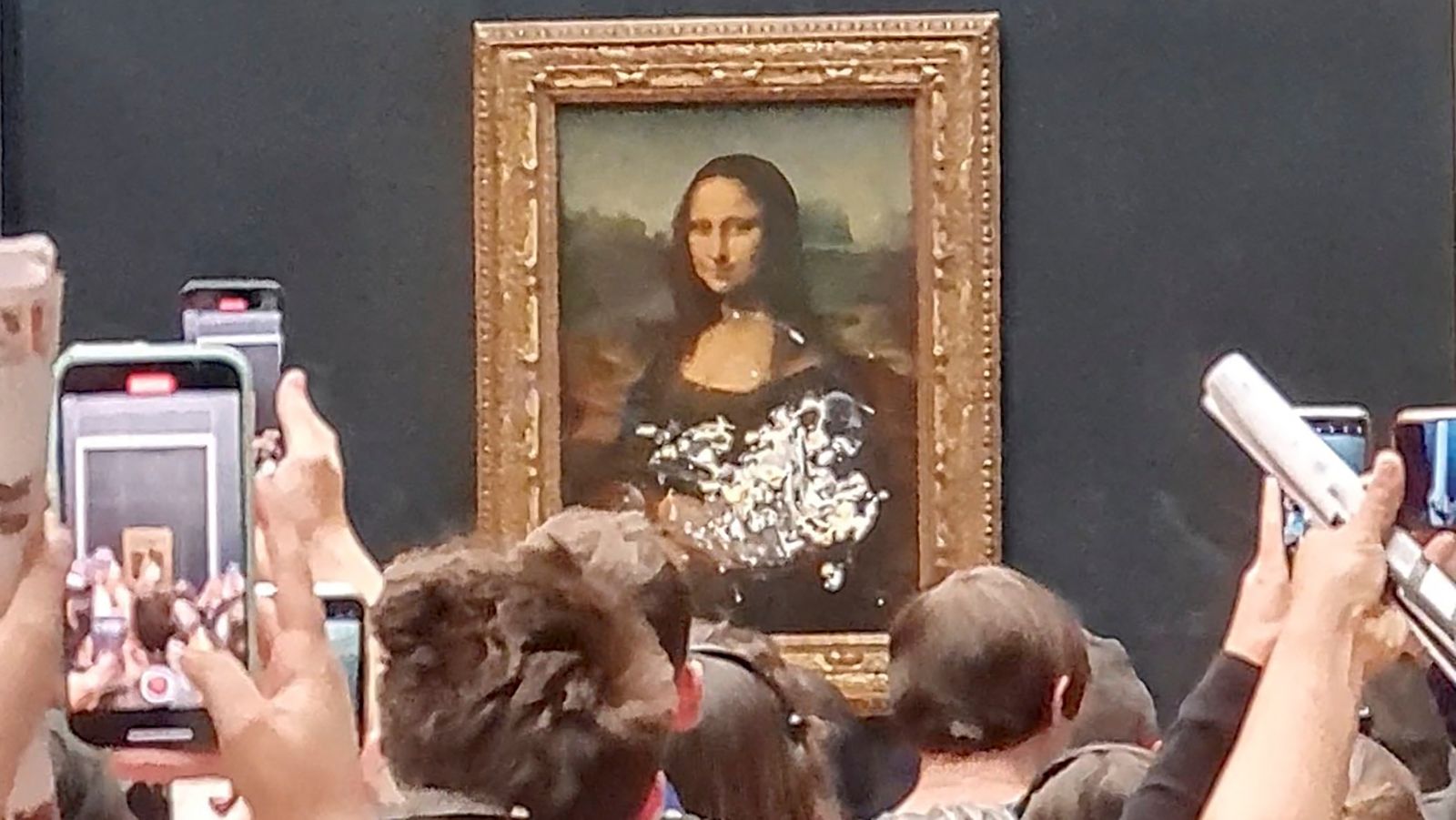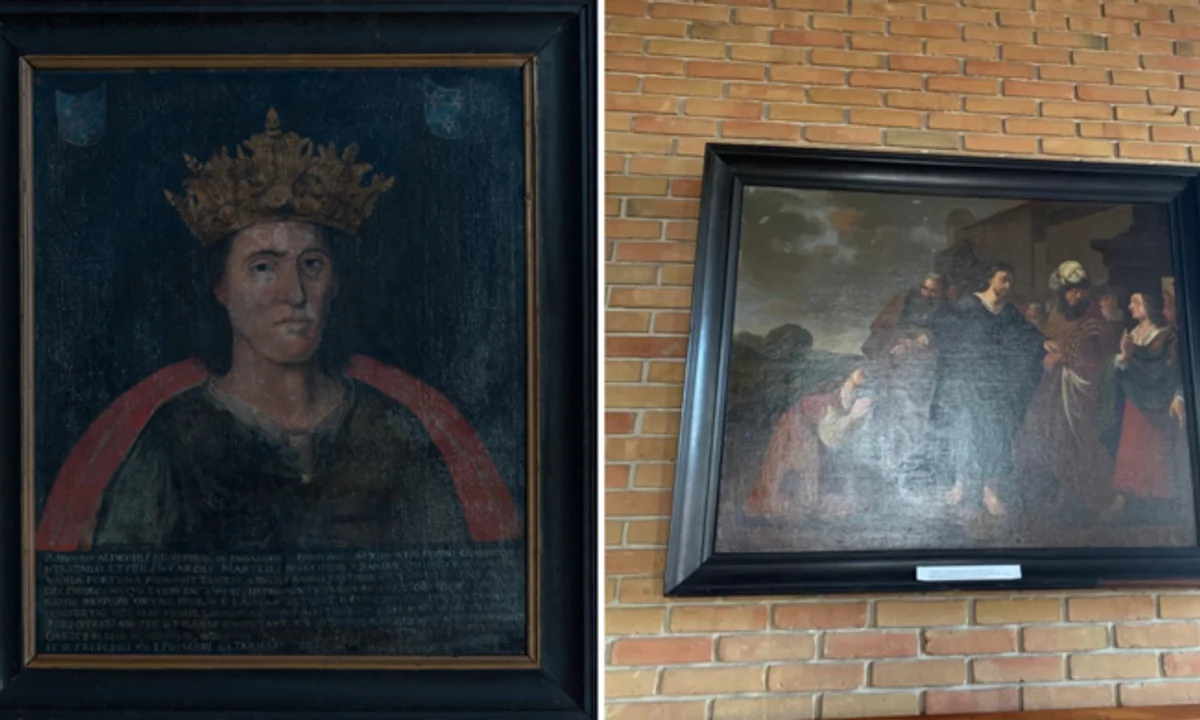Six Paintings Stolen From Former Medemblik Town Hall Dropped Off At Art Detective's Home
Unveil the Enigmatic Heist Six Stolen Masterpieces Resurface! Dive into a Riveting Art Mystery as the Missing Medemblik Town Hall Paintings Find a Mysterious Path to an Art Detective's Doorstep Uncover the Clues and Unravel the Secrets Today
Nov 16, 20239 Shares9012 Views
Six Paintings Stolen From Former Medemblik Town Hall Dropped Off At Art Detective's HomeIn a heart-pounding twist of fate, the six invaluable paintings that were brazenly stolen from the historic Medemblik Town Hall have suddenly resurfaced in the most unexpected way. The art world is abuzz with intrigue as these masterpieces, long considered lost, were mysteriously dropped off at the doorstep of a renowned art detective.
The stolen paintings, once adorning the walls of a bygone era, hold not only aesthetic significance but also a rich historical legacy. Their sudden reappearance has ignited a thrilling quest for answers, as the art detective delves deep into the shadows of the criminal underworld to expose the culprits and unearth the motivations behind this audacious act.
Art In Disarray The Six Masterpieces Lost To Darkness
The annals of art history are replete with tales of masterpieces stolen, hidden, and lost to the world's gaze. These elusive works, often the product of centuries of artistic brilliance, become shrouded in mystery, their whereabouts unknown and their fate uncertain. Among these lost treasures, six stand out, their disappearance a testament to the capricious nature of art and the fragility of human endeavors.
1. The Ghent Altarpiece -This masterpiece of Flemish art, created by the brothers Hubert and Jan van Eyck in the early 15th century, is considered one of the most important works of Western art. The altarpiece is a three-paneled painting depicting the Adoration of the Mystic Lamb, and it is known for its intricate detail and use of perspective. In 1934, the altarpiece was stolen from its home in St. Bavo's Cathedral in Ghent, Belgium. The thieves, posing as art restorers, cut the altarpiece into 12 pieces and made off with it. Despite extensive searches, the stolen panels have never been recovered.
2. Mona Lisa -One of the most recognizable paintings in the world, Leonardo da Vinci's Mona Lisa is a portrait of a woman with an enigmatic smile. The painting was stolen from the Louvre Museum in Paris in 1911 by Vincenzo Peruggia, an Italian workman who had been employed at the museum. Peruggia hid the painting in his apartment for two years before attempting to sell it back to the Italian government. He was eventually caught and sentenced to seven months in prison.
3. Whistler's Mother -This iconic portrait of James McNeill Whistler's mother, Anna McNeill Whistler, was painted in 1871. The painting is known for its simplified composition and muted colors, and it has been praised for its psychological depth. In 1914, the painting was stolen from the Boston Museum of Fine Arts. The theft was not discovered until the following day, and the painting was never recovered.
4. The Scream -Edvard Munch's iconic painting depicts a figure in a state of intense anxiety, with a scream echoing from its mouth. The painting was created in 1893, and it has been interpreted as a representation of the human condition. In 2004, the painting was stolen from the National Museum of Norway in Oslo. The theft was a major blow to the museum and the Norwegian public, and the painting was eventually recovered after a 12-day search.
5. The Lady of Shalott -John William Waterhouse's painting depicts the Lady of Shalott, a figure from Arthurian legend who is cursed to never look upon the world until she is on her deathbed. The painting is known for its romanticism and its depiction of the beauty of the English countryside. In 1995, the painting was stolen from the Ashmolean Museum in Oxford, England. The theft was a major loss for the museum, and the painting was eventually recovered after a four-year search.
6. The Winged Victory of Samothrace -This Hellenistic sculpture of a winged goddess is one of the most famous works of art in the world. The statue was discovered in 1863 on the Greek island of Samothrace, and it is known for its graceful pose and its intricate details. In 1939, the statue was stolen from the Louvre Museum in Paris. The theft was a major blow to the museum and the French people, and the statue was eventually recovered after a two-year search.
Six Paintings Stolen From Former Medemblik Town Hall Dropped Off At Art Detective's Home
In a surprising turn of events, six paintings that were stolen from the former town hall of Medemblik in the Netherlands in September have been returned. The paintings were left on the doorstep of Arthur Brand, a renowned art detective, in Amsterdam.
Brand, who is known for his work in recovering stolen artworks, told Dutch media that he was at home on Friday evening when his doorbell rang. A man was standing outside with a van, and he asked Brand to come down and help him unload.
When Brand got to the van, he saw that it contained the six stolen paintings. The man told Brand that he had been asked to return the paintings and that he did not know who had stolen them.
The paintings, which are worth around €100,000, include a portrait of King Radboud, the last ruler of Frisia. The portrait is at least 360 years old and is the oldest known portrait of the king.
The other paintings include portraits of Prince William of Orange, Maurits of Orange, Count Jan van Nassau, and Queen Wilhelmina. There is also a biblical scene.
In the heart of Amsterdam, renowned art detective Arthur Brand received an unexpected delivery. A mysterious package arrived at his doorstep, containing six valuable paintings that had been stolen from a museum in Medemblik, Netherlands.
Brand said that he was "very surprised" to receive the paintings and that he was "very happy" that they had been returned. He said that he would be working with the police to try to identify the person who stole the paintings and to return them to their rightful owners.
The return of the paintings is a major breakthrough in the case. The police had been investigating the theft for several weeks, but they had not made any arrests.
Brand said that he believes that the paintings were returned because the thieves had realized that they would be difficult to sell. He said that he thinks the thieves may have been trying to extort money from the town of Medemblik, but that they decided to return the paintings instead.
Brand's relentless pursuit of the truth eventually led him to a surprising discovery. The thief turned out to be a former art dealer who had fallen on hard times. The dealer had stolen the paintings in a moment of desperation, hoping to sell them to raise money.
However, the dealer was soon consumed by guilt and regret. They realized that the paintings were worth more than money, that they were irreplaceable pieces of Dutch history. In a moment of conscience, they decided to return the paintings anonymously, hoping that they would be found and returned to their rightful place.
Brand was astonished by the dealer's story. He had never encountered a thief who had returned stolen art without being caught or coerced. The dealer's actions were a testament to the power of remorse and the desire to make amends.
Brand decided not to press charges against the dealer, believing that they had already suffered enough. Instead, he commended the dealer for their courage and their willingness to right their wrongs.
Medemblik Town Hall's Lost Legacy
Nestled amidst the picturesque landscapes of the Netherlands, the town of Medemblik boasts a rich history dating back centuries. One of its most notable landmarks is the former town hall, a majestic structure that has witnessed the town's evolution.
In September 2023, a shocking incident occurred at the former town hall, leaving the local community and art enthusiasts deeply concerned. A group of thieves struck the historic building, stealing six paintings of immense historical and artistic value.
These precious artworks, depicting prominent figures and biblical scenes, held a significant place in Medemblik's cultural heritage. The stolen paintings included:
1. A portrait of King Radboud- the last ruler of Frisia, dating back to the 17th century.
2.A portrait of William of Orange- the founder of the Dutch Republic, created in the 16th century.
3. A portrait of Maurits of Orange - the son of William of Orange and a prominent military commander, painted in the 17th century.
4. A portrait of Count Jan van Nassau - a nobleman and prominent figure in Dutch history, painted in the 16th century.
5. A portrait of Princess/Queen Wilhelmina - the Queen of the Netherlands from 1890 to 1948, painted in the early 20th century.
6. A biblical scene- likely depicting a story from the Old Testament, painted in the 19th century.
Preserving And Restoring The Paintings
The return of the stolen paintings to Medemblik was a major cause for celebration, but it also marked the beginning of a new challenge, preserving and restoring these precious artworks. The paintings had been subjected to various environmental conditions during their time in the hands of the thieves, and they required careful treatment to restore them to their former glory.
A team of experts was assembled to assess the condition of the paintings. They carefully examined each painting, noting any damage or deterioration. They also conducted tests to determine the composition of the pigments and the materials used in the paintings' creation. This information was essential for developing a restoration plan.
The restoration process was painstaking and meticulous. Each painting required careful cleaning to remove dirt, grime, and other contaminants. Damaged areas were repaired with specialized techniques, and missing fragments were recreated using traditional methods.In some cases, the restoration process involved the use of advanced technology. For example, infrared imaging was used to reveal hidden layers of paint beneath the surface, while X-rays were used to detect damage to the underlying structure of the paintings.
The restoration process took several months to complete. Throughout the process, the paintings were closely monitored to ensure that they were not subjected to any further damage. The experts also consulted with art historians and conservators to ensure that the restoration work was carried out in accordance with the highest standards.
When the restoration work was finally completed, the paintings were once again in pristine condition. The colors were vibrant, the details were sharp, and the paintings had regained their original brilliance.The return and restoration of the stolen paintings was a major triumph for the town of Medemblik. The paintings were once again on display for the public to enjoy, and they served as a reminder of the town's rich history and culture.
Frequently Asked Questions About Six Paintings Stolen From Former Medemblik Town Hall Dropped Off At Art Detective's Home
What Is The Most Stolen Painting In The World?
The Adoration of the Mystic LambThroughout six centuries, the Ghent Altarpiece, also called “The Adoration of the Mystic Lamb,” has been burned, forged, and raided in three different wars. It is, in fact, the world's most stolen artwork and is considered one of the most influential paintings ever made.
What Is The Most Expensive Piece Of Art Ever Stolen?
The ConcertThe largest art theft in world history occurred in Boston on March 18, 1990, when thieves stole 13 pieces, collectively valued at $500 million, from the Isabella Stewart Gardner Museum. Among the pieces stolen was Vermeer's The Concert, which is considered to be the most valuable stolen painting in the world.
What Is The Largest Art Theft In History?
the Isabella Stewart Gardner MuseumThe largest-value art theft occurred at the Isabella Stewart Gardner Museum in Boston, when 13 works, worth a combined $500 million were stolen in 1990. The case remains unsolved.
What Is Stolen Art Called?
Art theft, sometimes called artnapping, is the stealing of paintings, sculptures, or other forms of visual art from galleries, museums or other public and private locations. Stolen art is often resold or used by criminals as collateral to secure loans.
Conclusion
In the riveting saga of the six paintings stolen from the former Medemblik Town Hall and mysteriously dropped off at the doorstep of an art detective, we have traversed a journey that merged the realms of history, art, and intrigue. This captivating tale not only uncovered the audacious heist but also shone a spotlight on the resilience of human determination in the face of adversity. As the stolen masterpieces are restored to their rightful place, Medemblik Town Hall's legacy has been rekindled, offering a poignant reminder of the enduring significance of art and heritage in our lives.
This story, with its unexpected twists and enigmatic turns, serves as a testament to the indomitable spirit of those who seek the truth and safeguard our cultural heritage. It is a reminder that even when darkness descends, the power of art, history, and dedicated individuals can illuminate the path toward resolution, restoration, and justice, leaving us with a renewed appreciation for the profound impact of art on our world.
Jump to
Art In Disarray The Six Masterpieces Lost To Darkness
Six Paintings Stolen From Former Medemblik Town Hall Dropped Off At Art Detective's Home
Medemblik Town Hall's Lost Legacy
Preserving And Restoring The Paintings
Frequently Asked Questions About Six Paintings Stolen From Former Medemblik Town Hall Dropped Off At Art Detective's Home
Conclusion
Latest Articles
Popular Articles

